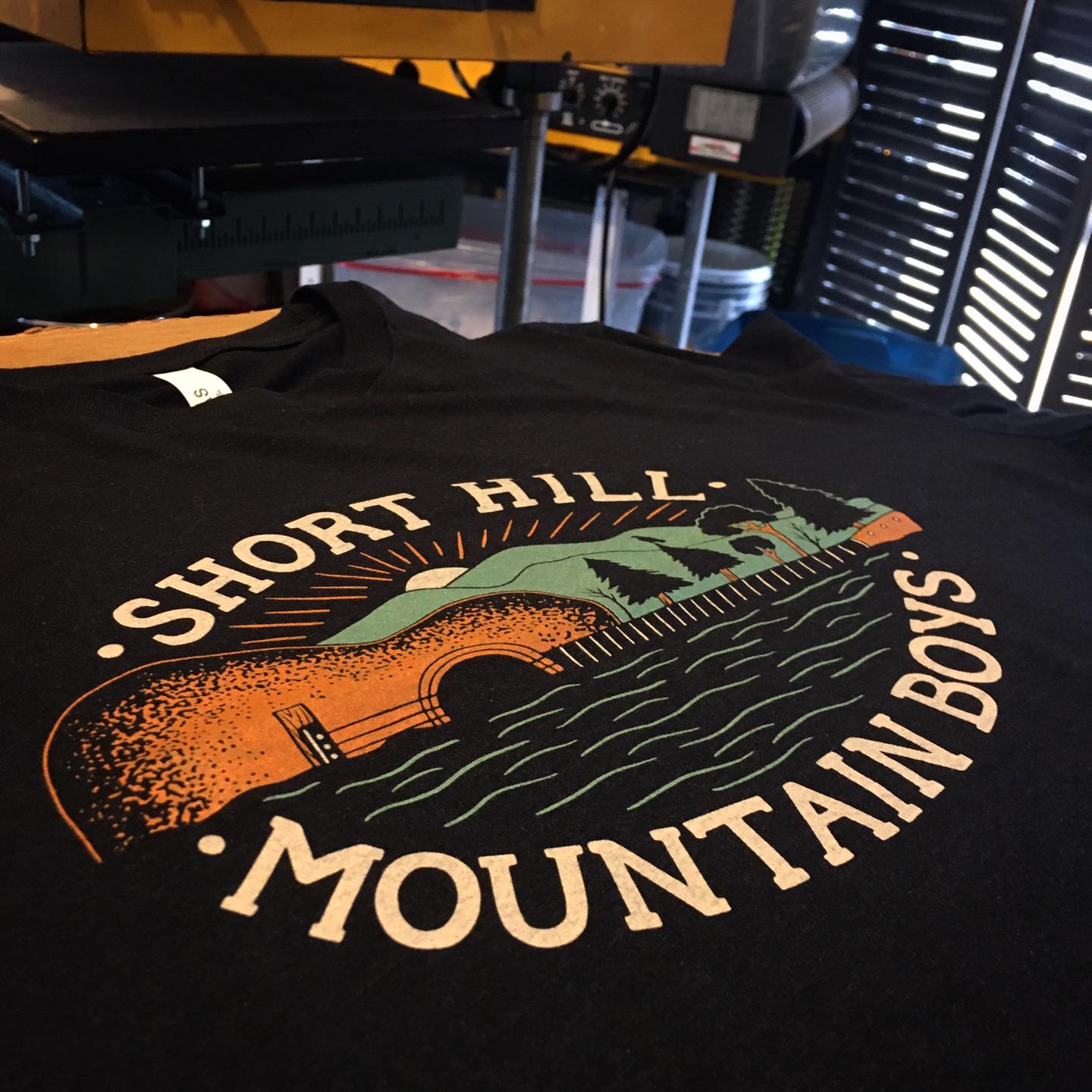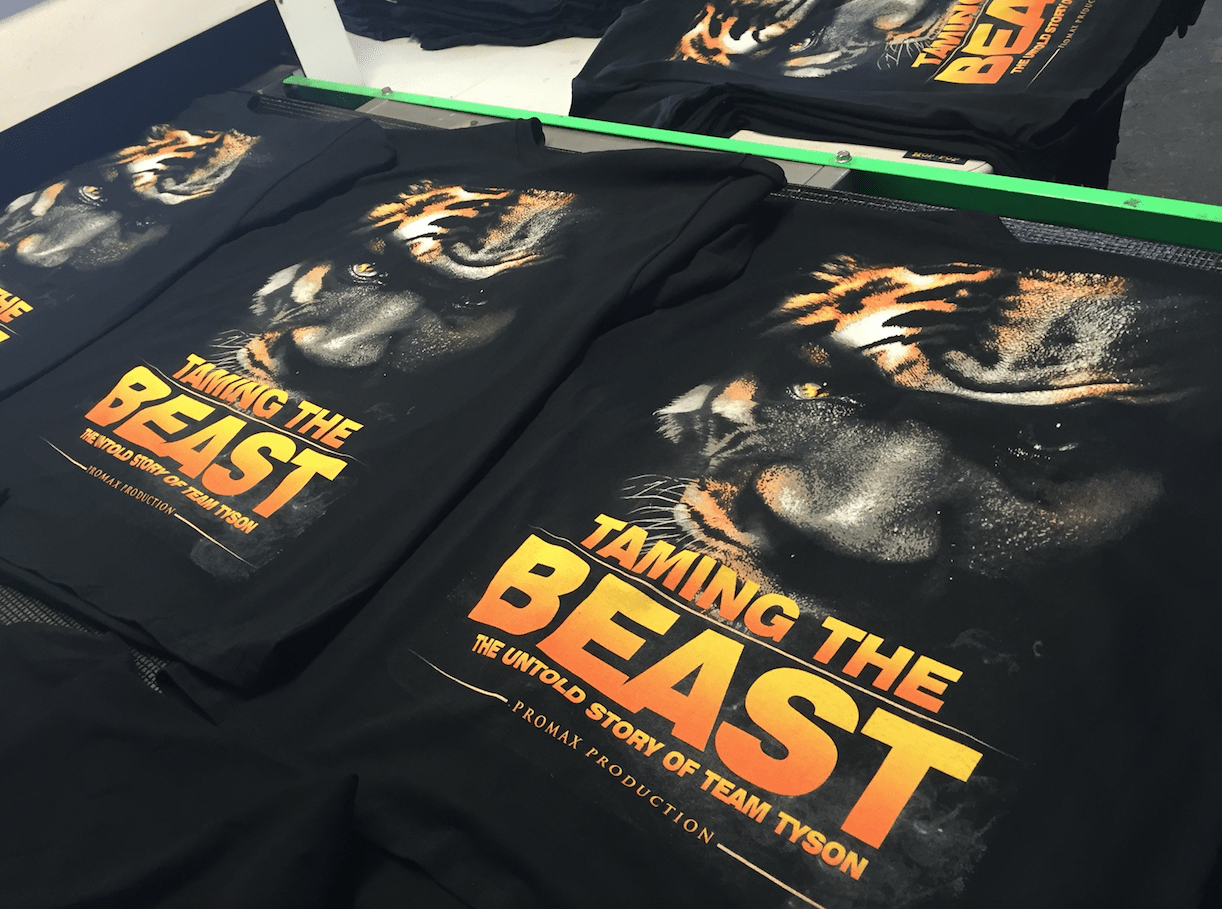Screen Printing Uncovered: Every Little Thing You Need to Learn About Tee and Garment Printing Strategies
Display printing is a fascinating technique that combines art with technique, using countless possibilities for imagination. All set to explore the essential components that make display publishing an art kind?
The Basics of Display Printing: Just How It Works
When you dive into display printing, you'll uncover it's both an art and a science. At its core, screen printing involves producing a pattern, or screen, that permits ink to pass with only in particular areas.
Placement the display over the material, after that utilize a squeegee to press ink through the display onto the garment. Each step is crucial, and understanding them will certainly elevate your screen printing abilities, transforming simple garments right into special, expressive pieces.
Kinds Of Display Printing Techniques
As soon as you understand the basics of screen printing, it's time to discover the numerous methods that can boost your layouts. One prominent technique is traditional display printing, where ink is pressed through a stenciled display.
One more option is plastisol printing, recognized for its toughness and vivid shades, making it a favored for numerous brands. Experiment with halftone printing to create slope effects and detailed designs.
Vital Devices for Screen Printing
To attain spectacular results in screen printing, having the appropriate equipment is fundamental. You'll need a durable display printing structure, which holds the mesh that moves your layout onto the garment. Next off, spend in top notch squeegees; these are essential for applying ink equally across the screen.
Picking the Right Inks and Products
When picking inks and products for display printing, you need to take right into account the sort of ink that works best for your job. Think of textile compatibility to assure your layouts look fantastic and last lengthy. Additionally, discover eco-friendly ink choices to make your printing procedure extra sustainable.
Types of Display Inks
Picking the appropriate screen ink is vital for accomplishing dynamic, resilient prints that satisfy your project's demands. There are numerous kinds of screen inks to check out. Plastisol ink is popular for its adaptability and simplicity of usage, supplying exceptional shade opacity on dark textiles. Water-based ink, on the various other hand, provides a softer feel and is environmentally friendly, making it suitable for those looking to lessen their environmental influence. Discharge inks remove dye from the textile, resulting in a soft, vintage look but need details handling. Specialty inks, such as metallic or glow-in-the-dark, can add special effects to your styles. Assess your task requirements and choose the ink that aligns best with your wanted result.

Textile Compatibility Factors To Consider
Understanding fabric compatibility is crucial for attaining high-quality display prints, especially considering that different products react uniquely to different inks. When choosing inks, consider the fabric kind-- cotton, polyester, or blends. For cotton, water-based inks function well, providing softness and breathability. Polyester, on the various other hand, typically needs plastisol inks for much better adhesion and dynamic shades. You might need to use a mix of both kinds if you're printing on blends. Constantly test your inks on sample textile to ensure they stick correctly and maintain shade integrity. Furthermore, bear in mind that material weight and appearance can affect the last result, so picking the appropriate ink and material combo is crucial for your job's success.
Eco-Friendly Ink Options
Environmentally friendly inks are coming to be a popular choice for screen printers that desire to decrease their environmental impact while maintaining high quality. When picking inks, consider water-based inks, which are much less damaging and less complicated to cleanse up contrasted to traditional solvents.
Additionally, try to find inks made from renewable energies, such as soy or vegetable-based alternatives. By picking the right inks and materials, you'll not only produce spectacular styles however likewise add to a much more sustainable printing process. Make the button, and your prints will certainly reflect your commitment to the atmosphere!
Preparing Your Style for Screen Printing

File Style Demands
To guarantee your style looks vivid and sharp on textile, you'll require to pay close attention to file format requirements for screen printing. Make sure your layout has a transparent background to prevent unwanted white edges on your prints. Keep color modes in mind; CMYK is typical for display printing, so transform your RGB designs accordingly.
Color Separation Techniques
Shade separation is a necessary action in preparing your style for screen printing, and grasping it can greatly boost your print quality. You'll need to damage your layout into private colors, as each color calls for a different screen throughout printing. Begin by determining all the colors in your design and produce layers for each one. You can use software like Adobe Photoshop or Illustrator to separate and different shades effectively. Be certain to conserve each layer as a different file, normally in a layout like TIFF or PSD. This precision not only assures precise color representation however also simplifies the printing procedure. By taking notice of shade separation, you'll achieve vivid and expert results in your screen-printed garments.
Resolution and Dimension
Attaining the very best lead to screen printing begins with guaranteeing your design has the right resolution and dimension. Preferably, your artwork needs to be at least 300 DPI (dots per inch) for sharp, clear prints. Your last item might look pixelated and less than professional. if you make use of lower resolution.
When it pertains to dimension, consider the dimensions of your print location. Design your artwork to match the last print dimension, ideally creating it in the real dimensions you'll be printing. This means, you'll avoid any type of unanticipated scaling issues.
Constantly inspect your layout in both vector and raster layouts. Vector graphics can be scaled without shedding top quality, making them optimal for screen printing. Preparing correctly will ensure your style looks remarkable on every garment!
Step-by-Step Screen Printing Refine
Screen printing is a vibrant procedure that permits you to develop dynamic styles on different surface areas. To get going, you'll need a screen, solution, and your selected ink. Initially, prepare your display by cleaning it completely. Next, use the emulsion evenly and let it dry in a dark location. When dry, subject your screen to light with your layout positioned on it, which will certainly set the solution where the light hits, developing a pattern - screen printing kit.
After cleaning out the unexposed solution, your display prepares. Establish it up on your printing surface area link and straighten your garment Check Out Your URL underneath it. Pour ink onto the screen and make use of a squeegee to press the ink through the pattern onto the textile. Raise the screen meticulously and allow the print dry. Finally, heal the ink utilizing warm to guarantee sturdiness. That's it! You've efficiently screen printed your layout.
Tips for Successful Display Printing Projects
While you're diving into your display printing jobs, keep in mind that preparation is vital to success. Begin by collecting all your products-- inks, displays, squeegees, and garments. A clean workspace assists prevent undesirable errors, so tidy up prior to you begin.
Following, verify your art work is high-resolution and correctly sized for your garment. Test your screen for correct exposure and tidy it extensively to stay clear of spots. When blending your inks, adhere to the maker's guidelines to achieve the right consistency.
Throughout printing, apply also stress with your squeegee for constant outcomes. Don't rush; take your time to confirm each print fulfills your standards. After printing, allow your garments completely dry entirely before managing or packaging them.
Lastly, always keep an example of your benefit future recommendation. In this manner, you can evaluate your development and enhance your strategies in time. Delighted printing!

Regularly Asked Inquiries
How much time Does It Take to Establish up a Screen Printing Job?
Setting up a screen printing job commonly takes around half an hour to an hour. You'll prepare the displays, mix inks, and change journalism. The moment differs based upon complexity and experience, so stay arranged!
Can I Print on Different Textile Enters Utilizing the Same Technique?
Yes, you can print on various fabric kinds making use of the exact same strategy, but you'll require to adjust your setups and inks. Some fabrics soak up ink differently, so trying out warranties the very best outcomes for each and every material.
What Prevail Blunders to Prevent in Screen Printing?
When screen printing, prevent usual blunders like utilizing the wrong ink, ignoring appropriate exposure times, or missing pre-press additional reading checks. Always examine your arrangement and preserve tidy displays to guarantee high quality results each time.
How Can I Effectively Clean and Maintain My Screen Printing Tools?
To effectively tidy and maintain your screen printing tools, you ought to on a regular basis wash displays with suitable solvents, examine squeegees for wear, and guarantee all devices are stored dust-free and dry. Uniformity prevents expensive repairs and improves efficiency.
Is Display Printing Ecologically Pleasant Compared to Various Other Approaches?
Display printing can be more eco-friendly than other methods, especially if you utilize eco-conscious products and water-based inks. By choosing lasting materials and techniques, you reduce waste and reduce your influence on the planet.
Screen Printing Uncovered: Everything You Need to Know Regarding Tee Shirt and Garment Printing Strategies
At its core, display printing includes creating a stencil, or screen, that enables ink to pass with just in specific areas. Setting the display over the textile, after that utilize a squeegee to push ink with the screen onto the garment. One preferred method is typical screen printing, where ink is pushed through a stenciled screen.When choosing inks and materials for screen printing, you need to take into account the type of ink that works best for your project.
Comments on “Detailed Silk Screen Printing for Custom Art Apparel”